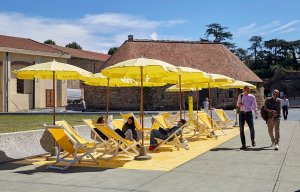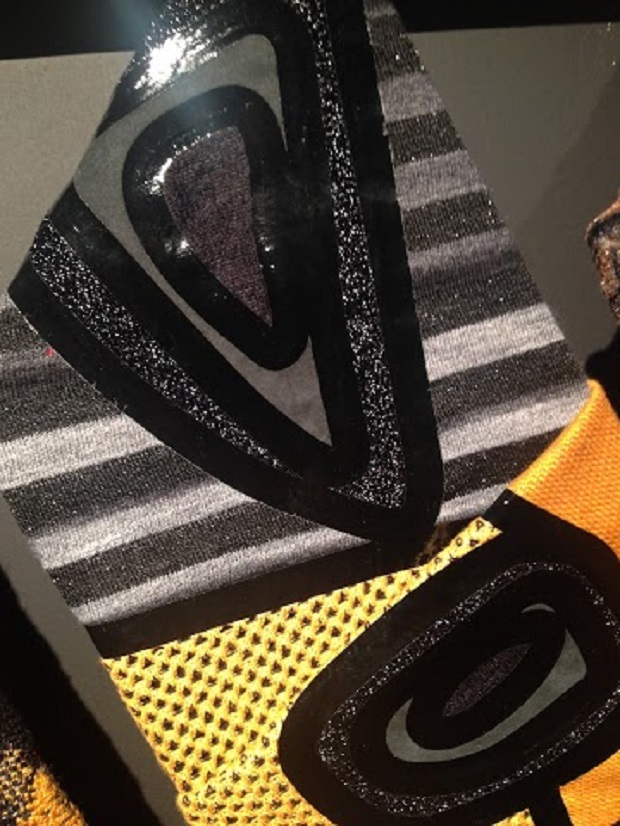
New dates for Summer 2025 Pitti Uomo, Bimbo, and Filati
With a total buyer attendance of 5,200 visitors, feedback from the latest edition of Pitti Filati exhibitors was extremely optimistic. Carlo Volpi reports from Florence on Italy's leading yarns show.

15th July 2014
Knitting Industry
|
Florence
A new edition of Pitti Filati marked by growth and positivity has just concluded in Florence. With a total buyer attendance of 5,200 people (+8% compared to July 2013), the feedback from the exhibitors was extremely optimistic.
Foreign attendance has grown steadily from last year, with a total of 2,800 of buyers (9.5% more from July last year) and with a significant increase from representatives of the most important markets, such as Switzerland (+28%), the US (+15%), the UK and Turkey (+13%), Germany (+12%), and France and Japan (+10%).

The presence of representatives from growing markets, such as Brazil, was also very good and an increase was also registered amongst Italian buyers (+6%), with a total number of 2,400.
“Made In” was the new theme of the Research Area, a celebration of product quality, the marriage between ancient artisanal skills and modern technologies and a journey through cultural traceability that valorises local skills, materials and products. Fashion designer Angelo Figus and knitwear expert Nicola Miller take us through a journey around the world, from Iceland to Egypt, the Grand Canyon, Mongolia and Australia, creating ten moods inspired by these landscapes: Made In Outback, Made in Steppes, Made in East, Made in Voodoo, Made in Empire, Made in Iceland, Made in Grand, Made in Highland, Made in Blue and Made in Stone.
Denim Italiano is a new initiative created by the collaboration of Pitti Immagine and Milano Unica under the creative direction of Angelo Figus and Maurizio Brocchetto, “an event dedicated to communication” as stated by Raffaello Napoleone, CEO of Pitti Immagine, “an exhibition that proclaims the excellence of the Italian denim production chain, from the cloth to the washing, the finishings, embroidery and printing”. This project offers an additional service to the visitors of Pitti Filati, creating a synergy between the various sectors of the fashion industry.

Denim Italiano also featured an exhibition where the indigo dyed cloth played the protagonists in its various forms: Vero (traditional denim linked to the history of work clothes), Palestra (sporty denim mixed with techno materials), D-Segno (contemporary, minimal and graphic denim) and Sartoria (denim for a formal wardrobe). All the garments in the exhibition were designed by Cristiano Berto, Kristian Guerra, Lara Canal, Lucia Rosin, Maurizio Zaupa and Valerio Baronti and made in collaboration with the exhibitors.
“Moda Futuribile” was another project that launched during Pitti Filati 75. Promoted by Dyloan Studio in collaboration with Pitti Immagine, the initiative draws attention to the value of high end design in the fashion industry.

Four designers (Kristy Krivak, Edward Buchanan, Carlo Volpi and Vito Colacurcio) worked with some of the most prestigious Italian knitwear factories and spinners to produce capsule collections using innovative technologies from Dyloan studio, with particular emphasis on the research and development of new garment construction methods and textile manipulation techniques. Moda Futuribile is an invitation to look beyond the restraints of mass production and consider the possibilities of slow design and technological innovation.
The fifth edition of the international knitwear contest took place during Pitti Filati 75, once again various Italian spinners took part to the initiative along several prestigious fashion colleges from Italy, the UK, Switzerland, Germany, China and Japan.
The students from each school designed and produced two outfits using the yarns provided by the spinners and a jury composed of several industry experts, along with the votes from the public, chose Matilda Norberg from The Royal College of Art, UK, as the winner of this edition. The project is coordinated by Ornella Bignami from Elementi Moda.
Knit club, the ever growing area of the fair showcasing high quality knitwear factories, comes back to Pitti Filati with a larger number of companies, like Shima Seiki, Fuzzi, Mely’s, Clouds and Pini.
Once again, the trend of light and airy yarns with a very soft and almost impalpable handle carried on from last year. Unusual napped surfaces and velvety furs in mohair and alpaca, very chunky, multi-plied yarns in various fibres, like Gulliver and Bongo from Biagioli Modesto, took centre stage.

A “mix and match” spirit characterised many collections, where surprising mixes between animal and man made fibres, elegance and technical innovation emerged. Carefully orchestrated mixes of lurex and wool or mohair, like Cometa from Industria Italiana Filati, created dramatic light effects, noble fibres were reinvented with a more substantial use of materials like Yak and Camel. Bright, summery colours enriched the collections of many spinners like Cariaggi, Di.Ve’ and Filart, almost expressing a desire to bring the joyful spirit of the warm months to the winter season. Cariaggi presented a luxurious collection characterised by extremely soft and cosy yarns, almost as airy and impalpable as a cloud. Some of the most relevant new yarns were Nirvana (silk and cashmere), Play, a 100% cashmere tubular yarn, surprisingly light and soft, and Bijou (cashmere and silk).

Lineapiu’ showed a mix of experimentation and elegance in their collection, from their ultra fine (2/80’s) Modal Stretch wool to their technological yarns, like Tiramolla, Tecno (neoprene effect) and Zeta. Lineapiu also worked on a new concept of fancy yarns, creating new structures and using pioneering new technology and machinery. Bruco, a boucle’ yarn with a circular, spring like structure, is the result of this innovation, along with Spuma, another light and impalpable yarn, and Drop. Their evening range featured mixes of iridescent lurexes and furry mohairs, like Luce and Glitter.
Tollegno presented two new additions to their collection: Newcashmere and Nanocashmere. Newcashmere is spun with a cashmere fibre originating from Alashan, a very harsh area of Mongolia where the goats produce a particularly warm and soft coat that protects them from the elements. Nanocashmere is a technological yarn developed by the company with the University of Hong Kong where each cashmere fibre is protected on a molecular level by some nano hydrophobic structures. The result is a hydro-repellent yarn that is easy to wash and very quick to dry.

Botto Poala introduced their new Cashmore range: sourced from New South Wales and Victoria, in Australia, the wool fibre used in this yarn in finer and more rare than cashmere.
Wild yet sophisticated, long and scruffy or short, noble and well-groomed, furs take over garment shapes and redefine their silhouettes.
Structured fabrics in technological yarns that hardly drape on the body, ignoring its shapes and contours and distorting it in new three-dimensional shapes.

Softer textiles with blister stitches that envelop the body in an organic cocoon, patterned fabrics in dense, compact pile stitches and others with thick and light embossed effects.
Solid areas of colour in smooth, fine gauge yarns, flat and compact fabrics with cold lines that delineate perimeters of urban colours, recalling the architecture of modern cities and their steel and concrete buildings.
Chunky, multi-plied, smooth yarns that lend themselves very well to engineered stitch structures and textures.
Jacquards lose their orderly structures and become an unruly mixture of stripes, areas of colour, almost like a coded message, an organic surface where new canons of beauty will emerge.

Business intelligence for the fibre, textiles and apparel industries: technologies, innovations, markets, investments, trade policy, sourcing, strategy...
Find out more